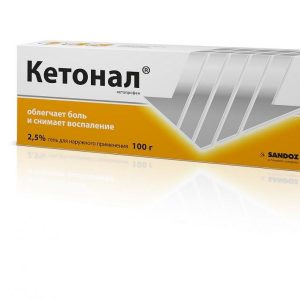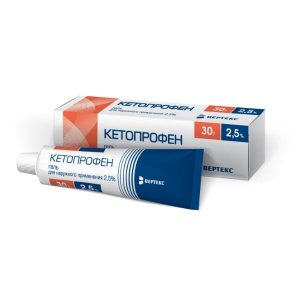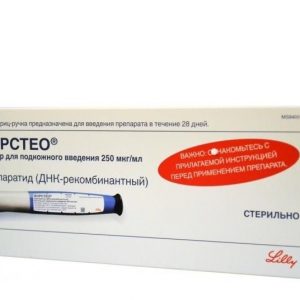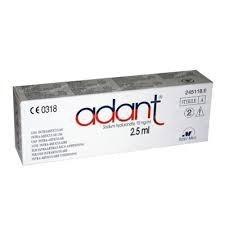Description
Release form
Concentrate for solution for infusion
Packaging
6.25 ml of concentrate containing 5 mg zoledronic acid in dark glass bottles
Pharmacological action
The drug Resoclastin belongs to a new class of highly effective bisphosphonates with a selective effect on bone tissue. Zoledronic acid inhibits the activity of osteoclasts, does not have an undesirable effect on the formation, mineralization and mechanical properties of bone tissue.
The selective effect of bisphosphonates on bone tissue is based on a high affinity for mineralized bone tissue, but the exact molecular mechanism providing inhibition of osteoclast activity is still unclear. Zoledronic acid, in addition to the inhibitory effect on bone resorption, has direct antitumor properties, providing effectiveness in bone metastases.
In vitro, it was found that zoledronic acid, by inhibiting proliferation and inducing cell apoptosis, has a direct antitumor effect on myeloma cells and breast cancer, and reduces the risk of metastasis. Inhibition of osteoclastic resorption of bone tissue leads to a decrease in the growth of tumor cells, anti-angiogenic and analgesic activity is noted. Zoledronic acid also inhibits the proliferation of human endothelial cells. With hypercalcemia caused by a tumor, it reduces the concentration of calcium in the blood serum.
When applying zoledronic acid in patients with postmenopausal osteoporosis (T-criteria for mineral density of the bone tissue of the femoral neck is less than 2.5), a statistically significant decrease in the risk of vertebral fractures was noted, as well as reducing the risk of developing one or more new (repeated) vertebral fractures.
In the treatment of zoledronic acid in patients with Paget’s bone disease, a statistically significant, fast and long-term therapeutic response, normalization of the level of bone metabolism and alkaline phosphatase concentration in the blood plasma were observed.
The drug is also highly effective in patients previously treated with oral bisphosphonates. It was found that in most patients with the use of zoledronic acid, the therapeutic response persists throughout the entire treatment period (about 2 years).
In patients with postmenopausal osteoporosis and Paget’s bone disease, zoledronic acid does not affect the quality of normal bone, It does not interfere with bone remodeling and mineralization processes and contributes to the maintenance of normal trabecular bone architectonics.
Contraindications
Hypersensitivity to zoledronic acid, other bisphosphonates, or any other components of the drug.
Severe renal failure (creatinine clearance < Pregnancy and lactation. Children and adolescents (safety and efficacy not established). Caution in case of impaired renal function, with severe liver failure (no data on use), in patients with asthma sensitive to acetylsalicylic acid. Special instructions Before infusion, the patient should be excluded from dehydration. If necessary, it is recommended that physiological saline be administered before, in parallel, or after infusion of zoledronic acid. Overhydration of the patient should be avoided due to the risk of complications from the cardiovascular system. When deciding on the use of resoclastin in patients with hypercalcemia due to a malignant tumor, against the background of impaired renal function, it is necessary to assess the patient’s condition and conclude that the potential benefit and the possible risk of treatment are correlated. After the introduction of the drug, constant monitoring of the concentration of calcium, magnesium, is necessary, phosphorus and creatinine in serum. During therapy with zoledronic acid, renal function should be closely monitored. Risk factors for impaired renal function include dehydration, previous renal failure, repeated administration of zoledronic acid or other bisphosphonates, as well as the use of nephrotoxic drugs, and too rapid administration of the drug. It should be borne in mind that when prescribing other bisphosphonates to patients with asthma sensitive to acetylsalicylic acid, there have been cases of bronchospasm, however, with the use of zoledronic acid, such cases have not yet been reported. In cancer patients, during treatment with bisphosphonates, including zoledronic acid, cases of development of jaw osteonecrosis are described, In this connection, before the start of treatment, it is necessary to provide for a dental examination and, in the case of risk factors (anemia, coagulopathy, infection, poor hygiene or diseases of the oral cavity, concomitant chemotherapy or radiation therapy, treatment with corticosteroids), carry out appropriate preventive procedures. During treatment with zoledronic acid, patients with risk factors should avoid dental surgery if possible. To reduce the frequency of adverse reactions after the infusion of Rezoklastin FS, patients should be prescribed paracetamol or ibuprofen immediately after administration of the drug. Care must be taken when driving vehicles and other machinery. Composition of 1 ml of the concentrate contains: active substance: zoledronic acid monohydrate 0.85 mg (corresponds to anhydrous zoledronic acid) 0.80 mg excipients: D-Mannitol 44.0 mg sodium citrate dihydrate mg (equivalent to sodium citrate anhydrous) 4.8 mg water for injection up to 1.0 ml. 1 vial contains 6.25 ml (5 mg zoledronic acid) concentrate. Dosage and administration Resoclastin is administered intravenously, for at least 15 minutes. In case of hypercalcemia due to malignant tumors (calcium concentration with correction for albumin level> 12 mg / dl or 3 mmol / l), the recommended dose is 4 mg once. The infusion is carried out subject to adequate hydration of the patient.
In case of metastatic bone damage in malignant solid tumors and myeloma, the recommended dose is 4 mg every 3-4 weeks. Additionally, it is recommended to prescribe inside calcium at a dose of 500 mg per day and vitamin D at a dose of 400 ME per day.
In the postmenopausal and senile form of primary osteoporosis in order to increase bone mineral density and prevent fractures of vertebral bodies and other skeleton bones, the recommended dose of resoclastin is 5 mg once a year.
For secondary osteoporosis, the recommended dose of resoclastin is 5 mg once a year. If calcium and vitamin D intake from food is insufficient, patients with osteoporosis should additionally be prescribed calcium and vitamin D. Duration of the drug is determined by the doctor individually depending on the patient’s condition.
For the treatment of Paget’s bone disease, a single intravenous administration of the drug in a dose of 5 mg is recommended. Since Paget’s bone disease is characterized by a high level of bone metabolism, all patients with this disease are recommended to take a daily intake of calcium and vitamin D during the first 10 days after administration of zoledronic acid.
Repeated treatment with zoledronic acid for Paget’s bone disease. After the first injection of the drug, a long period of remission is observed. Currently, there is no specific data for re-treatment of Paget’s bone disease. However, the possibility of re-administration of the drug can be considered if a patient has a relapse of the disease on the basis of the following criteria: the absence of normalization of serum alkaline phosphatase activity, an increase in its activity in dynamics, as well as the presence of clinical signs of Paget’s bone disease, detected during a medical examination after 12 months after the introduction of the first dose of zolendronic acid.
Instructions for preparing the solution
The solution is prepared under aseptic conditions. Before administration, the drug is diluted (the contents of 1 bottle is 4 mg / -5-ml or 5 mg / 6.25 ml, depending on the recommended dose) in 100 ml of calcium-free infusion solution (0.9% sodium chloride solution or 5% dextrose solution). It is advisable to use the prepared Rezoklastin solution immediately after preparation. Unused solution can be stored in the refrigerator at a temperature of 2 to 8 ° C for no more than 24 hours. Before administration, the solution should be kept indoors until it reaches room temperature. The prepared solution of zoledronic acid must be administered using a separate system for iv infusion.
Side effects
From the hemopoietic organs: often anemia, sometimes thrombocytopenia, leukopenia rarely pancytopenia.
From the nervous system: often – headache sometimes – dizziness, feeling of anxiety, paresthesia, tremor, disturbances in taste, hypesthesia, hyperesthesia, sleep disorders rarely – confusion.
From the side of the organ of vision: often – conjunctivitis sometimes – blurred vision is very rare – uveitis, episcleritis.
From the gastrointestinal tract: often – nausea, vomiting, anorexia, sometimes – diarrhea, constipation, abdominal pain, dyspepsia, stomatitis, dry mouth.
From the respiratory system: sometimes – shortness of breath, cough.
From the side of the skin and skin appendages: sometimes – itching, rash (including erythematous and macular), excessive sweating.
From the musculoskeletal system: often – bone pain, myalgia, arthralgia, generalized pain, sometimes – muscle cramps.
From the cardiovascular system: sometimes – a marked increase or decrease in blood pressure rarely – bradycardia.
From the urinary system: often – impaired renal function, sometimes – acute renal failure, hematuria, proteinuria.
On the part of the immune system: sometimes – hypersensitivity reactions rarely – angioedema.
Local reactions: pain, irritation, swelling, formation of infiltrate at the injection site.
Violations of laboratory parameters: very often – hypophosphatemia often – increased serum concentrations of creatinine and urea, hypocalcemia sometimes – hypomagnesemia, hypokalemia rarely – hyperkalemia, hypernatremia.
Other: often – flu-like syndrome (including general malaise, chills, pain, fever), fever, sometimes asthenia, peripheral edema, chest pain, weight gain.
In the treatment of patients with bisphosphonates, including zoledronic acid, cases of jaw osteonecrosis have sometimes been reported (usually after tooth extraction or other dental intervention). In very rare cases, a decrease in blood pressure during therapy with zoledronic acid led to fainting or circulatory collapse.
Drug interactions
Solutions containing calcium or any divalent cations, in particular Ringer’s lactate solution, cannot be used as solvents. With the simultaneous use of anticancer drugs, diuretics, antibiotics, analgesics, clinically significant interactions were not observed.
Bisphosphonates and aminoglycosides have a unidirectional effect on the concentration of calcium in the blood serum, therefore, when administered simultaneously, the risk of hypocalcemia and hypomagnesemia increases.
Caution is advised while using zoledronic acid with drugs that are potentially nephrotoxic. In patients with multiple myeloma, an increased risk of developing renal dysfunction with the intravenous administration of bisphosphonates in combination with thalidomide is possible.
The drug should not be mixed with other medicines.
Overdose
In case of accidental overdose of the drug, the patient should be under constant medical supervision.
In the case of hypocalcemia, accompanied by clinical manifestations, an infusion of calcium gluconate is indicated.
Storage Conditions
In a dry, dark place at a temperature not exceeding 25 ° C.
Expiration
2 years.
Active ingredient
Zolendronic acid
Terms leave through pharmacies
In retseptu
Medication vein form
infusion solution




